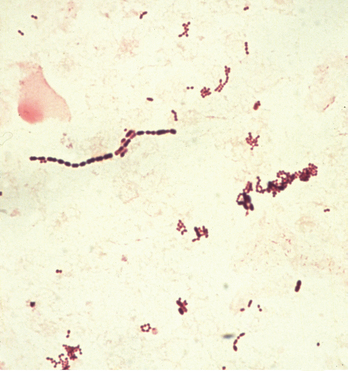CASE 68
A 24-year-old man was brought to a local hospital emergency department because of severe pain and swelling that had developed in his left thigh that day. The pain had progressed rapidly; before seeking treatment he developed a high fever and became extremely weak and was unable to walk without assistance.
LABORATORY STUDIES
Diagnostic Work-Up
Table 68-1 lists the likely causes of illness (differential diagnosis). Investigational approach may include
TABLE 68-1 Differential Diagnosis and Rationale for Inclusion (consideration)
Rationale: The presentation of rapidly progressive soft-tissue infection with signs of acute toxicity is characteristic of necrotizing fasciitis, which in immunocompetent patients is classically caused by S. pyogenes, much less commonly by other organisms listed above (including anaerobic bacteria; e.g., Clostridium perfringens). Vibrio species often cause severe soft-tissue infections in patients with cirrhosis. S. aureus commonly causes soft-tissue infections, but usually not this severe. P. aeruginosa does not commonly cause infections in immuno-competent individuals without other risk factors (e.g., diabetes, hospitalization).
COURSE
The patient was admitted to the hospital and received an intravenous antibiotic and an immediate surgical consultation. He underwent surgical exploration for possible necrotizing fasciitis and subsequently received a total fasciotomy of his left thigh, extending into his pelvis. Initial blood cultures were positive for a significant pathogen. Facultative anaerobic cultures of tissue specimens obtained at surgery grew the same pathogen that grew in blood cultures.
MICROBIOLOGIC PROPERTIES
Streptococci are Gram-positive cocci that grow in chains in body fluid (e.g., blood cultures; Fig. 68-1). Facultative anaerobic growth of S. pyogenes on blood agar medium yields small colonies with clear, sharp β-hemolysis on blood agar culture. The bacteria are catalase negative and bacitracin sensitive in a diagnostic disc susceptibility test. The cell surface of S. pyogenes exhibits a carbohydrate antigen (Lancefield group A). The fibrillar M protein that extrudes from the cell membrane as a layer of protein fuzz is a major cell-surface antigen with more than 100 serotypes. β-hemolytic group A streptococci (BHGAS) are extremely virulent bacteria. Consequently, detection and reporting of these organisms from all types of specimens are emphasized in the clinical laboratory.
Stay updated, free articles. Join our Telegram channel

Full access? Get Clinical Tree



